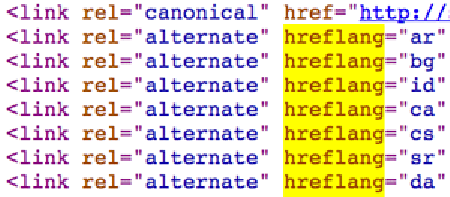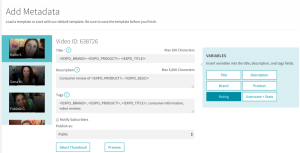
It can get difficult to rank your website on Google now a few years ago, especially if you run multiple versions of your site to accommodate the needs to multi-language, multi-country users.
It makes sense for the search engine to get more “picky” about who to rank and how, but there are still ways to push indexation and ranking in the right direction and help your users find the language or country specific pages they’re looking for.
I’m talking about targeting the right geolocalized audience by stating your website language (or localization). Or the hreflang tag.
Your brand presence in SERPs and geolocalization
As your business grows outside of the boundaries of your country, you will want to create more versions of your website to target users speaking different languages than yours.
That’s when the hreflang tag comes handy.
All you need to do is add some links of HTML code to the section of your website source code like the following:
The example above targets users by language only. To add localization, you will need the following:
- hreflang=”en-us” (US)
- hreflang=”en-gb” (UK)
- hreflang=”es-es” (Spain)
- hreflang=”es-mx” (Mexico)
- hreflang=”de-de” (Germany)
When Google recognizes a range of IPs as belonging to a certain country, it will index and serve country-specific users a targeted version of your website and not the international version.
Words of Caution:
- While it’s not certain that duplicate content penalties exist, if you want to play it careful in Google’s index, make sure to use the canonical tag on common pages across the various versions of your site to tell Google to only consider the main website for that.
- Make sure you are using the standard HTML coding for hreflang. A misuse of the code may render your efforts useless. You can use the hreflang validator from DejanSEO and the hreflang sitemap tool from Media Flow to validate your code.
Tom Armenante at Branded3.com shares more tips about hreflang implementation.
How to improve your geotargeted search traffic
You can use Google Analytics to see what appears under Audience > Demographics > Location (or Language) and how your users behave on your website. That will tell you if users from different countries are well distributed across the multiple versions of your site and if there’s any misalignment in the distribution (for example, if your Spanish version gets too many visitors from France, that may indicate that Google France indexes your Spanish version and not your French).
Another method to analyze misalignments in geotargeted ranking is to use Search Metrics and SEMRush to check top positions in other versions of Google (for example, Google Italy or Google UK). This way, you can verify if the Spanish version of your website (or a competitor’s or another website) is ranking well in Google Spain and Google Mexico, for example.
If a country-specific version of Google ranks pages come from your main website instead of its location or language specific version, something has gone wrong in the way Google understood how your website is structured.
There’s an additional hreflang tag that comes to your rescue in that case: the rel=”alternate” hreflang=”x” annotation. Google uses this tag — to be included between … tags, XML sitemap or your HTTP header — to correctly identify target language and country for your pages.
Will this gimmick work all the time? Actually, most of the time. There are case studies available on the effectiveness of the “x” annotation:
- SEER coworker Saurav’s hreflang case study (and success story)
- MediaFlow’s Pete’s success story
- A test developed by Grosen and featured on the State of Search blog
On August 3, 2015, Google reassured webmasters that an incorrect implementation of the hreflang tag won’t lead to penalties or to lower rankings. However, fixing any errors will improve your chances of correct indexation of your country or language specific pages.
Do you implement the hreflang tag on your website? How does it help your Google (or other search engine) rankings?
Share your experience or success story in the comments below.
(259)





